Durable, versatile and clean are all words to describe a concrete garden wall. Whether your tastes lean toward contemporary or classic, concrete can fit into almost any landscape. In this article, we’re going to focus on poured-in-place concrete walls, though they can also be precast or made from block. Poured walls can be used for foundations, retaining walls and decorative walls. Precast walls are poured and cured in a controlled environment and transported as panels to the site for installation. They are most commonly used for building foundations. Block walls can be used for foundations, retaining walls and decorative walls. The blocks are made in a factory and come in many shapes, sizes and colors.
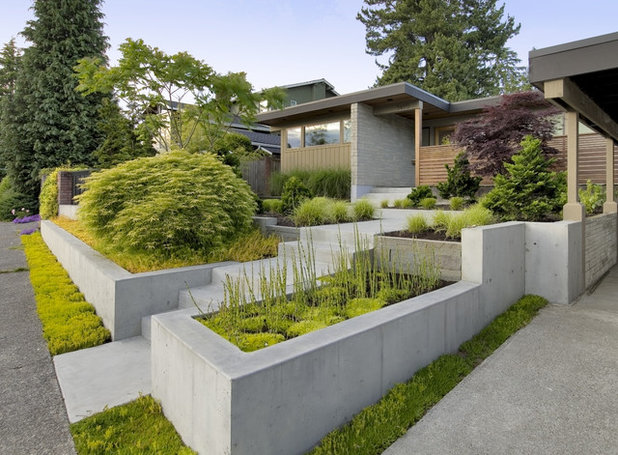
SHKS Architects
The basics. Building a solid and attractive concrete wall is a tricky business and shouldn’t be considered a DIY project. If you’re interested in the nitty-gritty details, I suggest reaching out to a good contractor who can explain the process. However, here are the basics about poured-concrete walls.
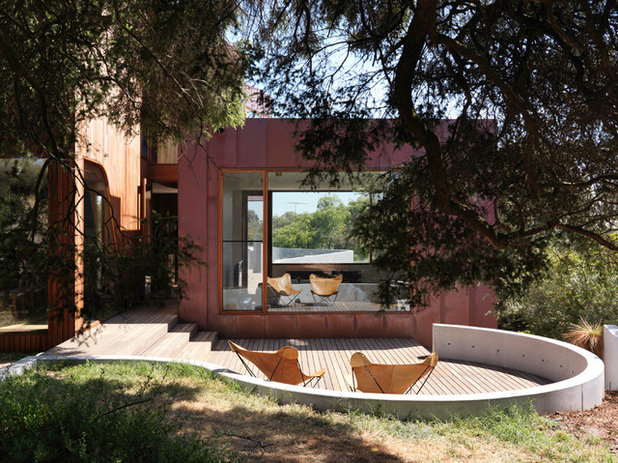
Auhaus Architecture
A poured-concrete wall is any wall in which concrete is poured into a form made to the specifications in the design. Specifications include wall depth, width, height and surface texture. Most concrete forms are made of wood and steel. In some cases, especially where a curve is needed, plastic, fiberglass and resin can be used.
Before the concrete is poured into the wall form, the contractor must first dig and pour a footing that acts as the foundation for the wall. Rebar can be included for extra strength and durability.
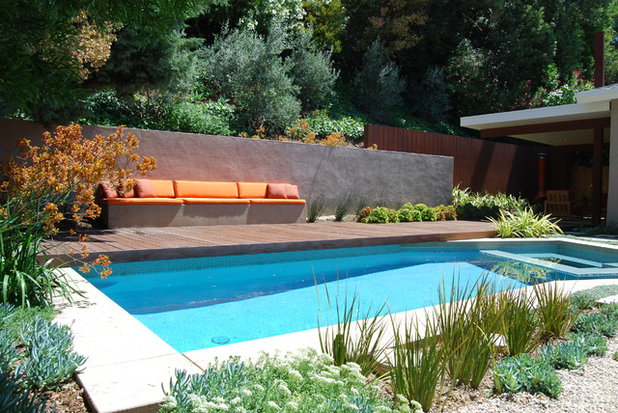
Jeremy Taylor Landscapes
Cost. The cost to build a concrete wall ranges from about $65 to $80 per square face foot, depending on the site conditions and design specifications. (Square face foot is a unit of measurement used by masons and contractors to calculate how many square feet of wall are visible, regardless of depth.) The price is likely to be higher for an especially deep wall.
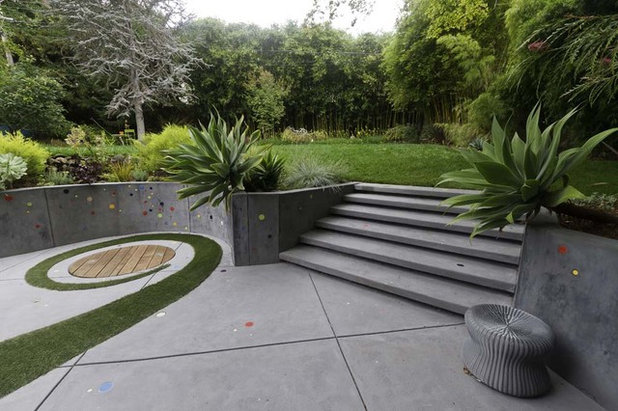 Pros
Pros
Strength. Concrete walls are incredibly strong and are capable of holding back tons of earth and water, making them a good choice for retaining walls.
Durability. A concrete wall is rotproof, rustproof and fireproof and, if built correctly, will last for decades.
Low-maintenance. Depending on your climate, you may need to clean your concrete walls only once every few years. It’s necessary to check for cracks on occasion, but they can be repaired easily with mortar.
Versatility. Because it’s constructed using a form, a concrete wall can be built with angles and curves to create almost any shape.
Environmentally friendly. Concrete walls are made with natural materials, such as clay and limestone, that in many cases are locally sourced.
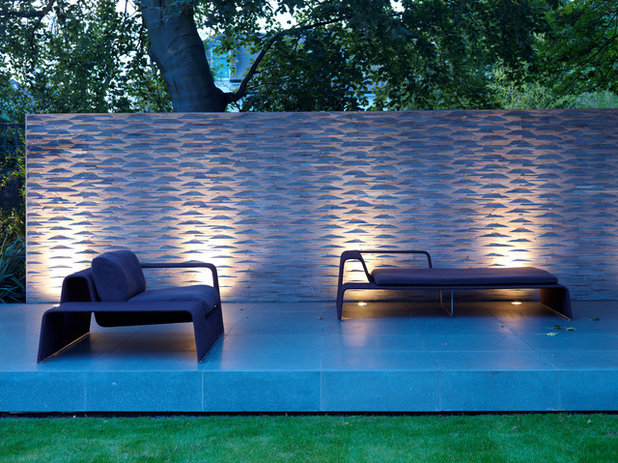
Gregory Phillips Architects
Aesthetics. A variety of surfaces and finishes can be applied to concrete to take it beyond the traditional gray.
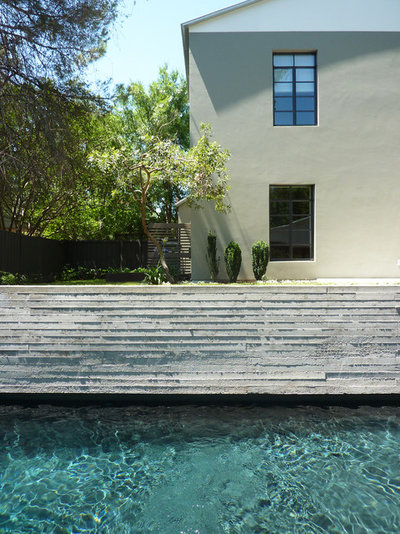
A Parallel Architecture
Forms can be built using rough boards for a textured look. When the form is pulled away, the concrete wall has the appearance of wood grain. This is called board-formed concrete.
Textured form liners can be used to give the wall surface almost any look. A sponge can be applied while the concrete is still damp for a stuccoed look, or a trowel can be used for a swirled effect. Colored stains can also be used.
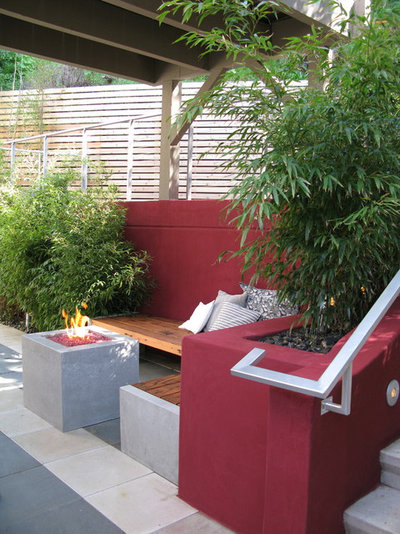
Shades Of Green Landscape Architecture
Tip: Paint or stain can be applied after the forms have been pulled for a color pop. Red stucco has been applied to this poured-in-place concrete wall.
See more of this family-friendly patio in Oakland
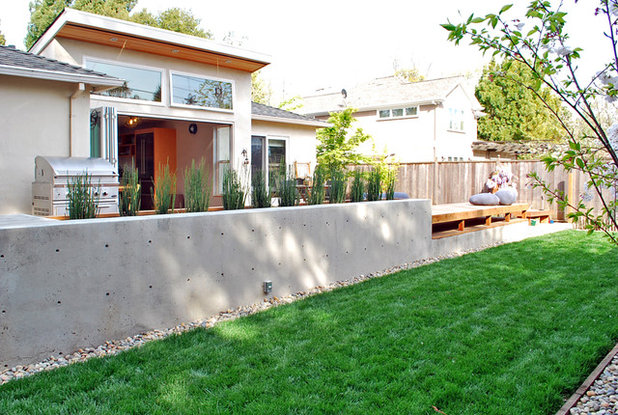
Ojanen_Chiou architects LLP
Cons
Drainage. Concrete is an impervious material, and for a retaining wall it’s necessary to install weep holes — through which water can pass — or a drainage system that diverts water away, to lessen the hydrostatic pressure.
Required design expertise and installation. A concrete wall can be quicker and less labor-intensive to install than other types of walls. But, as with stacked stone, it requires a level of expertise that keeps it from being a DIY project. Trust me, it’s best left to the pros.
Waterproofing. Rain and snow will erode a concrete wall over time if it isn’t sealed with a waterproofing agent. A sealant should be applied to maintain concrete’s clean look.
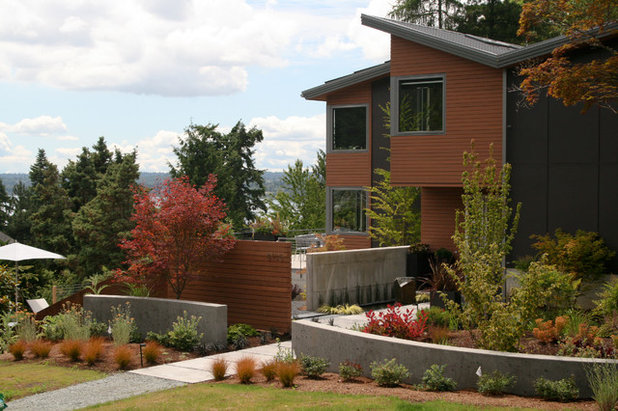
Banyon Tree Design Studio
How to Use Concrete WallsFreestanding wall. A freestanding wall acts as a barrier and a visual break. Low concrete walls mark the entrance to this Seattle-area home.
See more photos of this contemporary garden
Tip: It’s a good idea to include contraction joints every 4 to 6 feet so the wall can accommodate some of the expansion and contraction that occur naturally during freeze-thaw cycles.
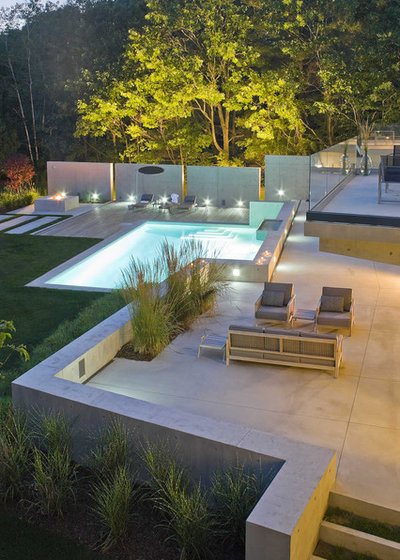
Wagner Hodgson
Retaining wall. Retaining walls built taller than 3 feet will require a permit and should be built with the aid of a landscape architect or engineer, to ensure that the hydrostatic pressure caused from the earth and water behind the wall is calculated correctly.
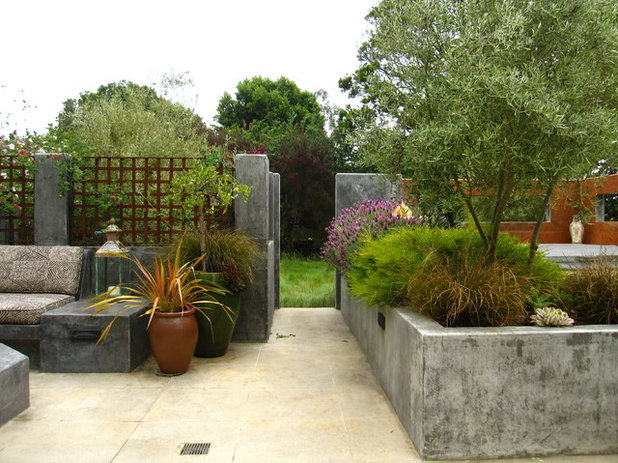
Kathleen Shaeffer Design, Exterior Spaces
Raised planter. Concrete walls can be used in numerous ways in the garden. A raised planter provides structure as well as functionality. The wide width offers a place to sit and rest or a comfortable spot for accessing flowers or vegetables in the planter.
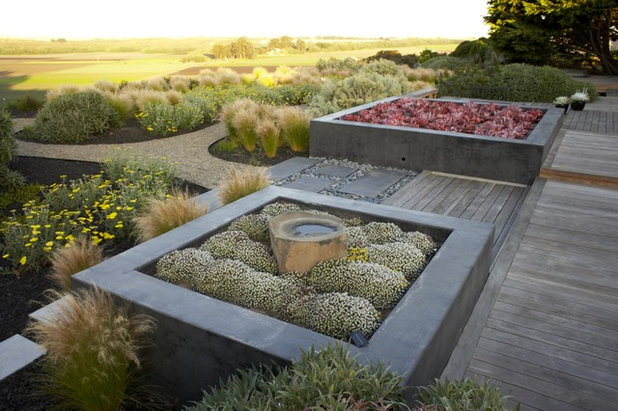
Jeffrey Gordon Smith Landscape Architecture
Here, a low planter creates a transition from the deck space to the less formal garden space beyond.
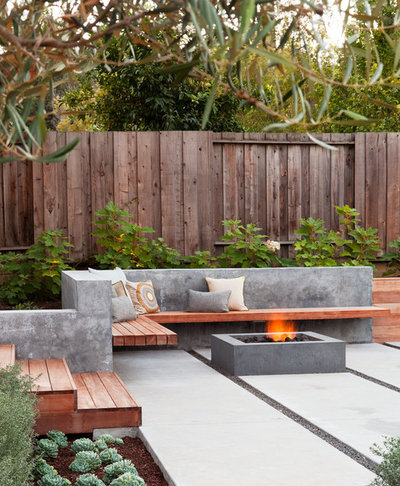
Arterra Landscape Architects
Bench. It’s possible to get creative with concrete walls and add on features such as this wood bench seat. Other uses for concrete walls include fire pits and water features.
Don’t be scared away by the fact that you’ll need an experienced contractor to install your wall. Concrete is a functional, durable and attractive option for the garden.





